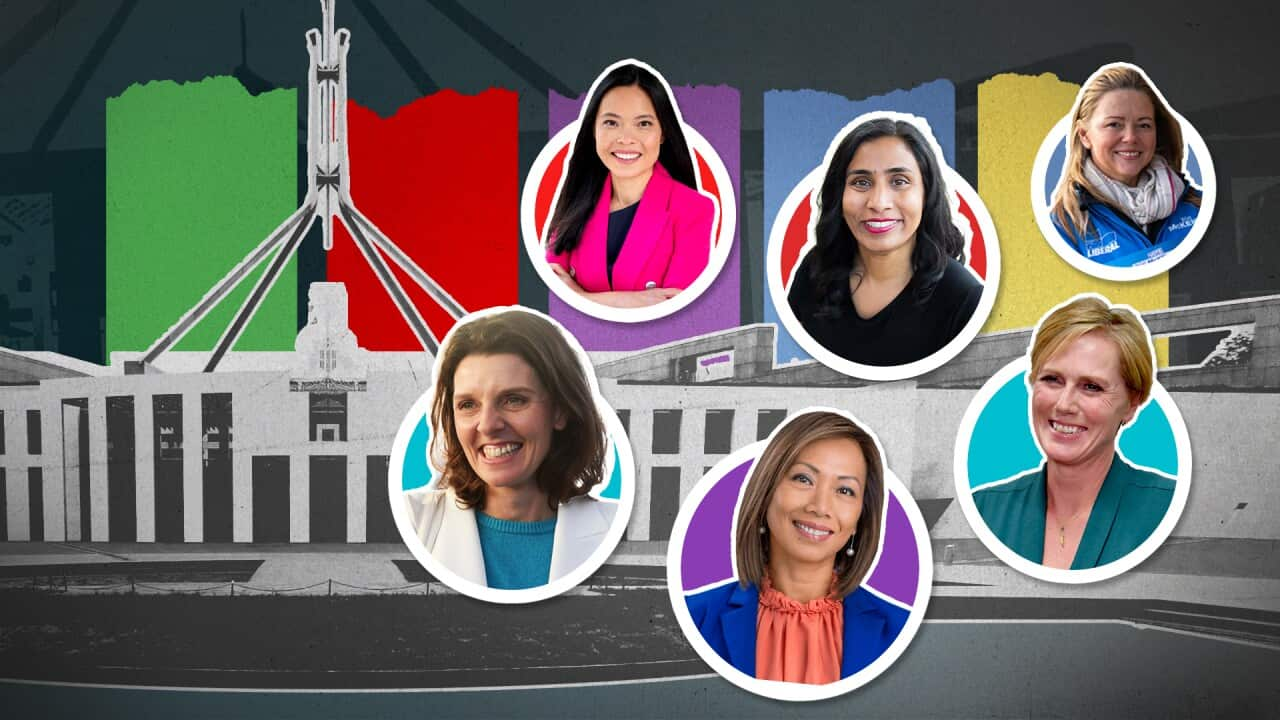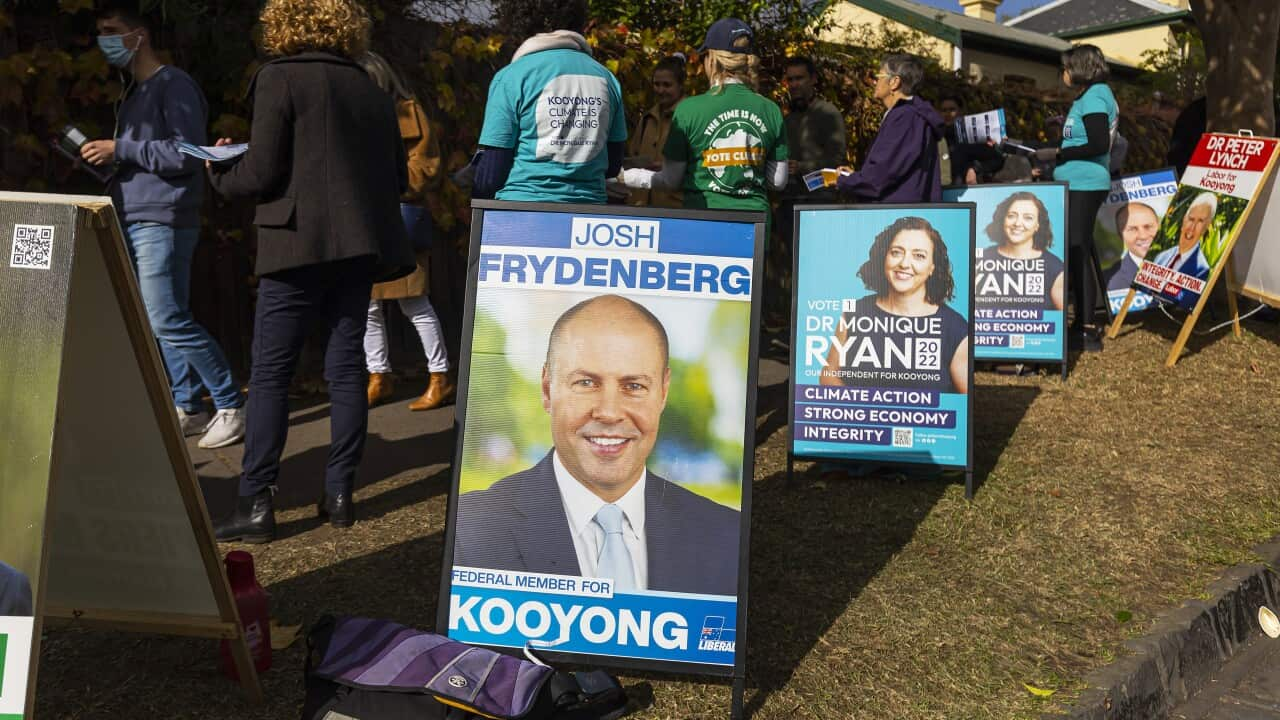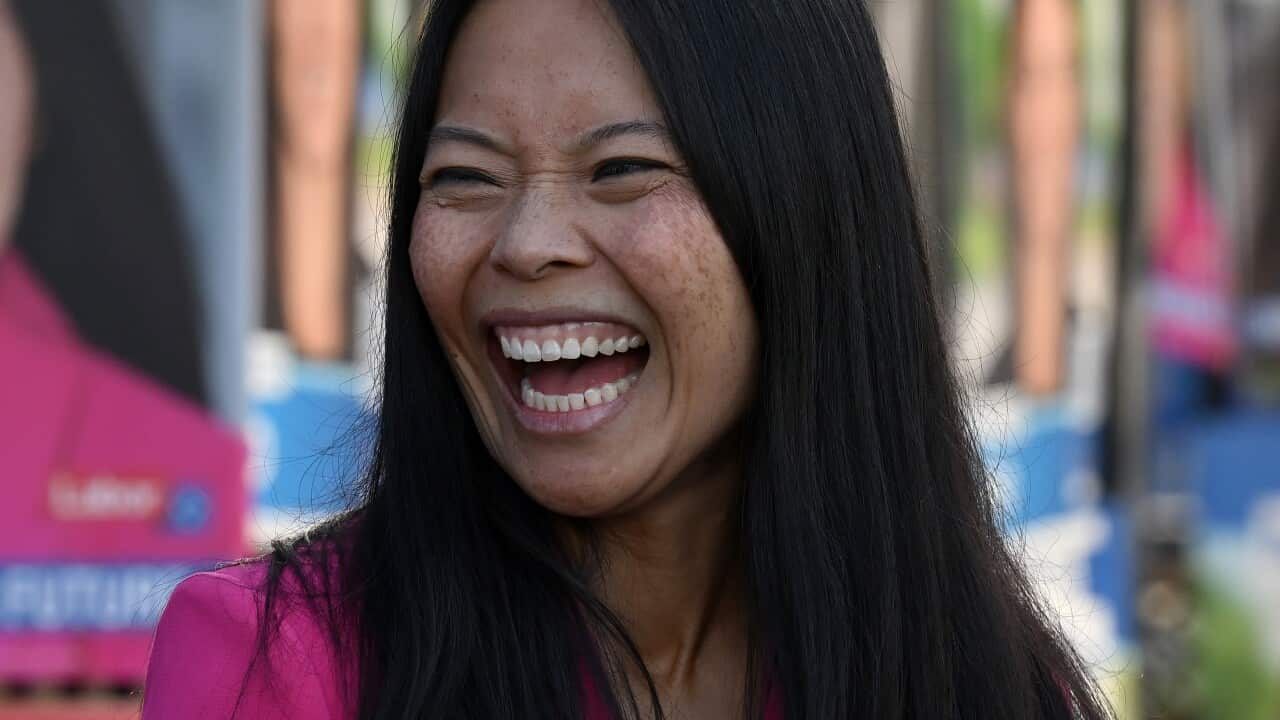Australia's new federal parliament is set to welcome more women than ever before, after what advocates have described as a "watershed" year for women across the country.
While the 47th parliament is still being decided, at least 18 new women are on track to be elected to the House of Representatives.
At the time of writing, the Australian Electoral Commission (AEC) lists two seats as "close", with the winner of one of those - the Brisbane seat of Ryan -
They will join about 38 women who are expected to retain their seats, according to the latest results.
While there is not yet a gender breakdown of how Australians voted last Saturday, the outcome has drawn commentary from advocates for women's rights and safety.
Georgie Dent, executive director of the Parenthood - an advocacy group for women, families and children - said she believes that "women were underestimated".
"I think that the role women have played in this election, and this historic result, will serve as a very compelling lesson about why women should never be underestimated at the ballot box," she told SBS News.
Ms Dent described 2021 - which saw a groundswell of female anger over the mistreatment of women in politics - as a "watershed year for women in Australia".
"The March for Justice in March last year galvanised hundreds and thousands of women right around the country for various reasons that were individual and unique, but they were almost universal," she said.
"To my mind, it looks like women across the board were saying, enough is enough."
Ms Dent said while it might have been easy to view this as "a moment in time," she thinks otherwise.
"What we know is that actually, what a whole lot of women did was they got home and they got busy organising ... they engaged as volunteers for the first time ... they put their hand up to run as candidates," she said.
"There was not just a sense of 'enough is enough', but there was also a sense of 'things can be better, and they must be better'."

The above graphic shows the representation of women in the House of Representatives, based on the latest results. Source: SBS News
Of the new women on track to head to Canberra, nine are Labor MPs, two are Liberal MPs and seven are independents.
Many of them were part of a wave of so-called "teal" independents who defeated several Liberal MPs in what's been described as a loss of the party's traditional voter base in these areas.
These independents had campaigned on gender equity among other issues including climate action.
"I think what Saturday's results show is that across the board - and it's not just the teal independents, if you look at the success that the Labor Party has had, the Greens have had, if you look at the success that the independent candidates who are taking these seats - all of them have had a shared commitment to gender equity, as well as climate and integrity," Ms Dent said.
Following the Coalition's defeat on 21 May, , saying it was time to start preselecting more women.
These new members include Dai Le, the independent member for Fowler, who grew up in the area as a child of Vietnamese refugees; , of Chinese heritage and whose parents fled Laos as a result of the Vietnam war; and Indian-origin Zaneta Mascarenhas, the new Labor member for Swan.
Labor's Marion Scrymgour, the first Indigenous woman elected to the Northern Territory parliament, will replace retiring long-serving MP Warren Snowdon, while Liberal Zoe McKenzie will replace former health minister Greg Hunt in the seat of Flinders.
According to Parliamentary Library figures, women made up 31.1 per cent of the lower house as of December 2020 (following the 2019 election), while 37.9 per cent were Senators.
Using Inter-Parliamentary Union data, this percentage is the highest since at least 1997, when that number was about 16 per cent. It remains above the global rate of 21 per cent calculated by UN Women.
The IPU ranked Australia based on the percentage of women in national parliaments as of October 2021.
Truly representative?
While the diversity of MPs elected over the weekend is a step in the right direction, diversity advocates say it's still not a true representation of Australia, where .
"A House of Representatives should be just that, truly representative of our community," Diversity Council Australia CEO Lisa Annese told SBS News.
“Diverse representation in parliament creates diversity of perspectives and ideas, which leads to better understanding of the issues that impact on our community and better design of solutions to address them.
"By continuing to increase the diversity of parliamentarians, the culture within parliament will change and enable Australia as a nation to respond to new challenges with greater efficiency, innovation and productivity.”
Chief Executive Officer of Diversity Australia, Steven Asnicar, said governments made up of a mix more in common with voters can better suit their needs, and the current levels of diversity remain inadequate.
"At a time when we could have fast-tracked a revolution in not only gender but in many segments of diversity, both parties still don’t understand the implications for getting it wrong," he told SBS News.
"We need an approach to diversity and inclusion that enables governments to demonstrate a real commitment to valuing people at every level."
The political system needs talent that matches the complexity of a rapidly changing world, Mr Asnicar says.
"To thrive, Australia will need diversity, equity and inclusion to unlock the power and potential of all the talent needed to run Australia for Australians in the future.
"Our political system should reflect all genders, all ages and all cultures to make the right decisions for Australians."
Ms Dent agrees there is not enough diversity, but says she is heartened by the "progress".
"The parliament itself does not reflect the entire population, but it is getting so much closer to that. And that is progress," she said.
: Rwanda, Cuba, Bolivia and the United Arab Estimates.
But UN Women doesn't expect gender parity in ministerial positions to be achieved before 2077.













